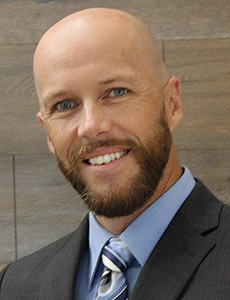In-Depth Series: Workers' Comp
Why Physician Fraud Rings Are a Major Workers’ Comp Issue And What You Can Do About Them

From doctors and organized-crime rings perpetuating sophisticated, multimillion-dollar schemes to individuals feigning disabilities and employers falsifying payroll numbers, there’s never a shortage of workers’ compensation fraud.
Analytics, however, are refining the task of detecting and prosecuting the fraud, making insurance investigators and law enforcement increasingly nimble at cracking even the sophisticated schemes. What once required years of manually sifting through paper claims to detect patterns of potential fraud now occurs at computer-processor speed.
The analytics give investigators a clearer view, for instance, of Southern California fraud rings funneling unsuspecting patients to shady doctors. The scams rely on complex kickback arrangements to reward doctors for prescribing needless diagnostic imaging, medications and durable medical equipment.
Losses to the large-scale crime rings cost employers much more than individual claimant fraud. Shaddi Kamiabipour, senior deputy district attorney in the Orange County, Calif. District Attorney’s Insurance Fraud Unit, said the average loss in an individual claimant fraud case is $30,000. By contrast, an average of $10 million in paid-out losses occurs for each case involving a large medical provider fraud ring.
Each fraud ring case typically ensnares about 50 victims, including insurers and self-insured employers.
The perpetrators “test-drive” their systems before fully launching them, Kamiabipour explained. They first submit a few medical bills to gauge insurers’ thresholds for questioning or denying various claims.
But analytics systems help uncover the activity by flagging when a tiny medical clinic, for example, is generating millions of dollars in workers’ comp claims.
Leveraging the data is only the starting point, though. Cracking the schemes still requires traditional detective work. Investigators “are finding witnesses, finding informants, finding ex-employees and doing surveillance, but it’s supplemented with analytics,” said Christopher Dill, special investigations unit manager for ICW Group Insurance Companies.
Individual insurers rarely have enough data to confirm a mass billing operation is underway, Kamiabipour explained. But with a single insurer’s tip-off of suspicious activity, the D.A.’s office can ask other carriers with data analytics capabilities to quickly search for similar bills emanating from the same players.
Armed with knowledge, “we go in and take information by force with warrants and uncover the fraud scheme,” Kamiabipour said.
Dill agreed that improved data access is leveling the playing field against the organized rings. “It’s encouraging to feel like we do have a new horizon for fraud fighting, because you can use data analytics; you can be smart about balancing your investigations and efforts,” he said.
Yet stopping workers’ comp fraud is akin to a game of whack-a-mole, with the crooks constantly improving their game, said Dale Banda, VP of the Anti-Fraud Alliance, which represents law enforcement, insurance investigators and others.
“They are going to find ways,” Banda said. “If there is money, there is fraud.”
Tie-In Arrangements Float Under the Radar
Fraud rings have evolved, staying ahead of the law. Years ago, investigators learned to trace the kickback cash and checks fraud rings paid doctors. Now rings reward doctors with reduced office rent or low-cost services needed, such as employee staffing and bill collection services.
In scams known as “tie-in arrangements,” criminals, called cappers, recruit patients and offer to direct a certain number of them to doctors paying fees for the patients.
The cappers may provide the patients at below-market rates. But the “tie-in” occurs when organized fraud rings then leverage the patient arrangements to convince the doctors to help stiff claims payers for the MRIs, medical equipment or other medical goods and services prescribed.
While the first step of recruiting the doctors generates only a low profit margin for the rings — similar to retail stores offering loss-leaders to attract customers — the second arrangement is much more lucrative, Dill said.
Observers might question why respected doctors would willingly accept the risk of prison. But fraud rings recruit doctors with license violations or criminal histories.
Last year, the Orange County D.A. announced charges against 10 attorneys and six cappers allegedly involved in a “massive multimillion-dollar workers’ compensation insurance referral scheme that exploited persons in predominantly Spanish-speaking communities.”
“If they don’t have data analytics or put funding into gathering records quickly, they usually don’t cooperate” with investigations. “They don’t go after [the criminals] and don’t get restitution from us. This all hurts their policyholders.” — Shaddi Kamiabipour, senior deputy district attorney in the Orange County, Calif. District Attorney’s Insurance Fraud Unit
The attorneys paid monthly fees for the cappers to deliver a minimum number of retained clients per month. Participating attorneys were required to use photocopy services, professional document management, scheduling and technology services provided by one of the defendants.
The cappers are accused of attracting patients by publishing Spanish-language flyers and fraudulent websites advertising free legal consultation. Calls made to the advertised telephone number routed to a call center in El Salvador and led to follow-up visits to the presumably injured worker’s home within 48 hours.
The case — which came to light three years earlier when a major insurance company tipped off the district attorney’s office — also involved medical providers suspected of paying patients and then prescribing them medical equipment, pharmaceuticals and diagnostic imaging.
Fraud Reaching Across America
California “is the capital of insurance fraud,” said Banda, with a few other states on the radar, including N.Y. and Florida. Texas is also on the radar, for health care schemes that include large-scale workers’ comp fraud. Recent federal indictments and convictions for the Texas schemes allege the use of shell companies, kickback payments, money laundering and bribes.
In one example, a federal indictment, announced last year in Texas, alleges the perpetrators controlled pharmacies used to submit $158 million in bogus claims to a federal employee workers’ comp program. The claims sought payment for compound creams used to treat scars, wounds and pain.
Participating doctors received free office rent and payments disguised as loans. In exchange, the doctors allegedly wrote unnecessary or excessive prescriptions, even when patients didn’t need or want the meds.
While data analytic systems are proving their worth for detecting, stopping and prosecuting the massive fraud schemes, not all insurers have adopted the technology. That eventually costs their policyholders, said Kamiabipour.
“If they don’t have data analytics or put funding into gathering records quickly, they usually don’t cooperate” with investigations, she said. “They don’t go after [the criminals] and don’t get restitution from us. This all hurts their policyholders.” &
This article is part of a three-part series on The Changing Landscape of Workers’ Comp Fraud.
 Why Physician Fraud Rings Are a Major Workers’ Comp Issue And What You Can Do About Them explores the perils of provider fraud and the changing landscape of the obstacles investigators face.
Why Physician Fraud Rings Are a Major Workers’ Comp Issue And What You Can Do About Them explores the perils of provider fraud and the changing landscape of the obstacles investigators face.
 Employer Premium Fraud Is Hurting Everyone — Including Honest Businesses addresses the various types of premium fraud, and why insurers are reluctant to investigate most offenders.
Employer Premium Fraud Is Hurting Everyone — Including Honest Businesses addresses the various types of premium fraud, and why insurers are reluctant to investigate most offenders.
 Why Are You Wasting Money on Pointless Workers’ Comp Claim Investigations? dives into the need for industry-wide investigative standards and how the trend toward worker advocacy is impacting the way employers approach worker fraud.
Why Are You Wasting Money on Pointless Workers’ Comp Claim Investigations? dives into the need for industry-wide investigative standards and how the trend toward worker advocacy is impacting the way employers approach worker fraud.











